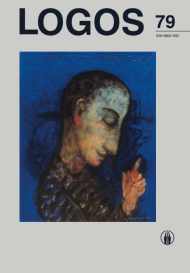Teatro Semiotika : Kūno Semiotizacijos Perspektyvos Modernaus Teatro Kontekste
Theatre Semiotics: the Perspective of Body Semiotization in Modern Theatre
Author(s): Gintarė NarauskaitėSubject(s): Theatre, Dance, Performing Arts, Semiology, Aesthetics
Published by: Visuomeninė organizacija »LOGOS«
Keywords: body semiotization; modern European theatre; autonomy of body; text; Artaud; Brecht;
Summary/Abstract: The article highlights the discourse of body semiotics, whose origins are associated with the experimentation of modern and avant-garde theatre, as well as, a new approach towards the function of actors and a literary text in theatre performances. Body somatization is seen in the direction of E. G. Craig, V. Mejerhold, A. Artaud, J. Louis-Barrault and B. Brecht. Although the interpretation of body function in theatre differed among artists, all directors pointed out the importance of the autonomy of actor’s body. In a modern theatre, the actor’s body has turned into an independent element of a theatrical process instead of being merely an illustrator of the meaning presented in the text. This had an influence on E. G. Craig, who created the concept of actor as an “Über-Marionette”. In V. Mejerhold‘s works, the physical factor gained more importance, since, in the light of the performance, the actor’s body had to become a mechanized and geometrized instrument. Furthermore, A. Artaud saw an actor’s body as a hieroglyph dissociated from its clear and articulated meaning. J. Louis-Barrault developed the idea of a total theatre. B. Brecht wanted to create a politically engaged theatre and used an actor’s body to express and embody political and ideological arguments.
Journal: LOGOS - A Journal of Religion, Philosophy, Comparative Cultural Studies and Art
- Issue Year: 2014
- Issue No: 79
- Page Range: 178-186
- Page Count: 9
- Language: Lithuanian

